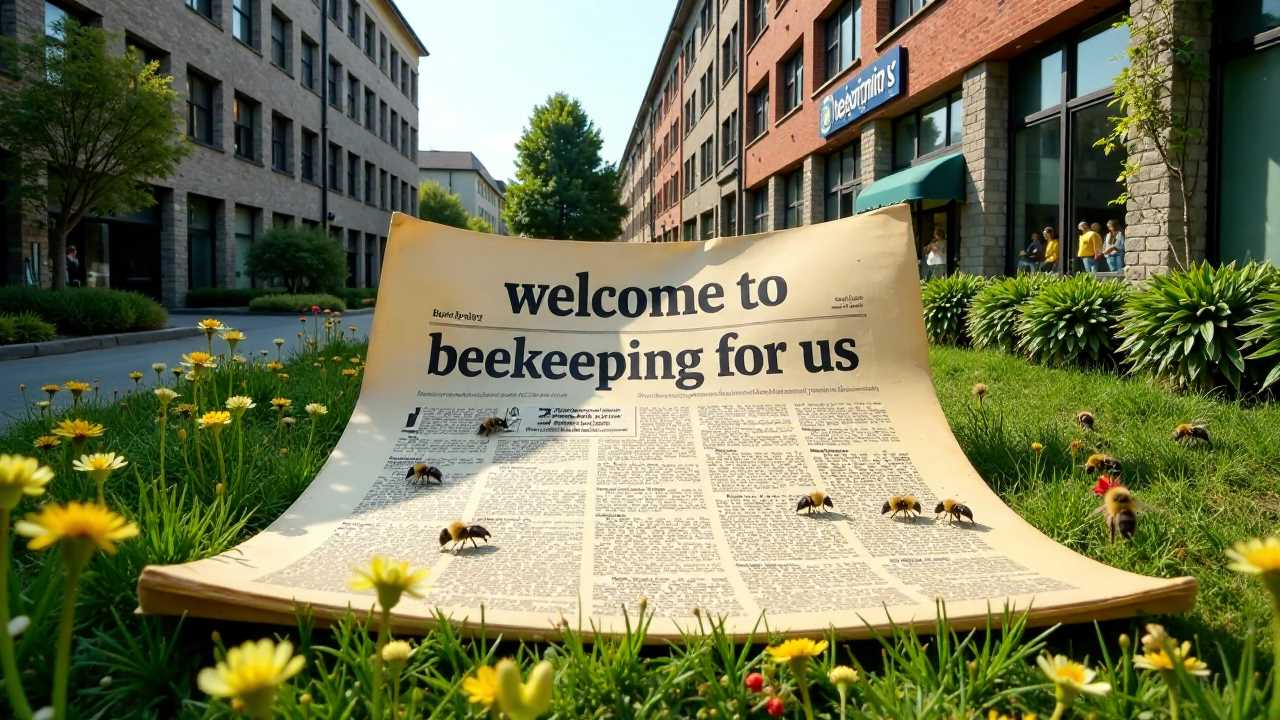
The Importance of Beekeeping in Urban Environments
In recent years, beekeeping for urban environments has gained significant attention as a vital practice for promoting pollination, enhancing biodiversity, and fostering sustainability. Urban areas, often characterized by concrete landscapes and limited green spaces, present unique challenges for pollinators. However, the integration of beekeeping into these settings offers a promising solution to support local ecosystems and contribute to conservation efforts.
Bees play a crucial role in the ecosystem, serving as primary pollinators for a wide variety of plants, including fruits, vegetables, and ornamental flowers. As urbanization continues to expand, the need for effective pollination becomes increasingly important. By establishing beekeeping initiatives in cities, we can create a more conducive environment for these essential insects, ultimately benefiting both the local flora and the community.
Understanding Pollination and Its Impact
Pollination is the process by which pollen is transferred from the male part of a flower to the female part, enabling fertilization and the production of seeds. This natural phenomenon is critical for the reproduction of many plants, and bees are among the most efficient pollinators. In urban settings, where gardens, parks, and green roofs are often limited, the presence of bees can significantly enhance the productivity of these spaces.
By promoting pollination through urban beekeeping, we can support the growth of diverse plant species, which in turn contributes to the overall biodiversity of the area. A rich variety of plants not only provides food and habitat for various wildlife but also improves air quality and enhances the aesthetic appeal of urban landscapes.
Enhancing Biodiversity Through Beekeeping
Biodiversity refers to the variety of life forms within a given ecosystem, including the diversity of species, genetic variations, and the ecosystems themselves. Urban beekeeping plays a pivotal role in enhancing biodiversity by creating habitats for bees and other pollinators.
When we introduce beehives into urban environments, we encourage the growth of flowering plants that are essential for bees' survival. This, in turn, attracts other pollinators and beneficial insects, leading to a more balanced and resilient ecosystem. Urban gardens, community parks, and green roofs can all serve as vital habitats for both bees and other wildlife, fostering a sense of connection between urban dwellers and nature.
Promoting Sustainability Through Urban Beekeeping
Sustainability is a key consideration in modern urban planning and development. Beekeeping aligns perfectly with sustainable practices by promoting local food production and reducing the carbon footprint associated with transporting food. When urban residents engage in beekeeping, they can produce their own honey and pollinate their gardens, leading to a more self-sufficient and sustainable community.
Moreover, urban beekeeping contributes to the conservation of bee populations, which have been declining due to habitat loss, pesticide use, and climate change. By creating safe spaces for bees to thrive, we can help mitigate these threats and ensure the survival of these vital pollinators. This conservation effort not only benefits bees but also supports the overall health of the urban ecosystem.
Creating Habitats for Bees in Urban Areas
To effectively support beekeeping for urban environments, it is essential to create suitable habitats for bees. This involves incorporating a variety of flowering plants that bloom at different times throughout the year, ensuring a continuous food source for bees. Native plants are particularly beneficial, as they are well-adapted to the local environment and provide the necessary resources for native bee species.
Urban planners and community members can collaborate to design green spaces that prioritize pollinator-friendly plants. Initiatives such as community gardens, rooftop gardens, and pollinator pathways can significantly enhance the availability of food and habitat for bees. Additionally, educating the public about the importance of bees and how to create supportive environments can foster a culture of conservation and stewardship.
Challenges and Solutions in Urban Beekeeping
While urban beekeeping presents numerous benefits, it also faces challenges that must be addressed. Limited space, potential conflicts with neighbors, and regulatory restrictions can hinder the establishment of beehives in urban areas. To overcome these challenges, it is essential to promote awareness and understanding of the benefits of beekeeping.
Engaging local governments and community organizations in discussions about the importance of bees can lead to more supportive policies and regulations. Providing resources and training for aspiring urban beekeepers can also help ensure that they are equipped with the knowledge and skills needed to maintain healthy hives.
A Call to Action for Urban Beekeeping
In summary, beekeeping for urban environments is a powerful tool for enhancing pollination, promoting biodiversity, and fostering sustainability. By creating habitats for bees and supporting their populations, we can contribute to the health of our urban ecosystems and ensure a more sustainable future.
We encourage individuals, communities, and local governments to embrace urban beekeeping as a means of conservation and ecological stewardship. Together, we can create vibrant, bee-friendly urban landscapes that benefit both people and the planet.
 Business & FinanceHealth & MedicineTechnologyLifestyle & CultureScience & EnvironmentWorld NewsPrivacy PolicyTerms And Conditions
Business & FinanceHealth & MedicineTechnologyLifestyle & CultureScience & EnvironmentWorld NewsPrivacy PolicyTerms And Conditions
